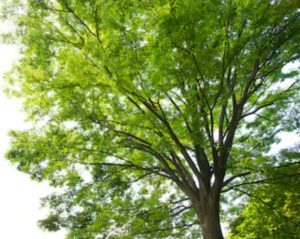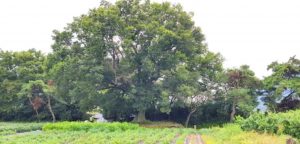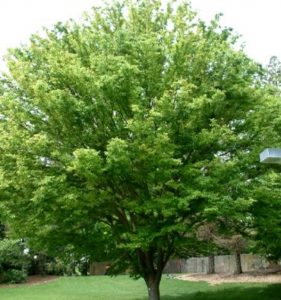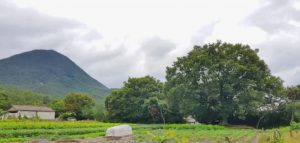Nature has created copious varieties of living creatures including plants and trees of all kinds. In the current era, we are smart enough to discover and popularize things according to our requirements. The Wireless Zelkova is one such tree that became famous due to its suitability for urban societies. In this article, we will highlight the basic characteristics of the beautiful Wireless Zelkova along with an introduction to its other family members.
Wireless Zelkova is a cultivar of the six species-genus Zelkova Serrata belonging to the botanical family Ulmaceae. These trees are native to Japan, China, and Korea and get their common name as Japanese Zelkova. Zelkovas are usually tall trees that can grow above 40 feet tall. These trees are huge in size and deciduous in nature means they lose leaves in the fall and are not evergreen. Zelkova trees are also called “Keaki”. The Keakies were introduced to America in the middle of the 18th Century.
The family has many different varieties some of which are even propagated as patented varieties of specific cultivators.
Varieties Of Zelkova

Common cultivars of Zelkova, are mentioned below along with their main features;
City Sprite Zelkova:
This variety is Oval shaped and the leaves turn yellow in the fall. These are usually 25 feet tall and 20 feet wide.
Green Vase Zelkova:
The Zelkova Serrata Green Vase is narrower as compared to all other cultivars. The green summer foliage turns into shades of bronze in autumn. It is pretty resistant to the cold weather and turns mature quickly as compared to others.
Village Green Zelkova:
This variety is wider as compared to others and is usually 40 feet in width. The winter turns the foliage into reddish shades.
Musashino Zelkova:
This Japanese Zelkova is a narrower variety, usually 15 to 20 feet in width, and turns yellow as the autumn arrives.
Halka Zelkova:
This is similar to Musashino, the only difference is that it comparatively grows quickly as compared to the former variety.
The Zelkova Serrata Wireless:
One famous Zelkova is the Wireless Zelkova which is a shorter variety and a mature tree grows up to 25 feet in height and spreads in a vase-like shape of about 35 feet in width.
This is the shortest of all other varieties. Popular for its short trunk, widespread foliage, and the beautiful reddish color in the fall.
THE WIRELESS ZELKOVA

- This smaller cultivar of Zelkova Serrat was introduced by the J. Frank Schmidt Nursery of Boring, USA. Due to the name of the cultivator, this variety is popularly known as Schmidt low, where low denotes its shorter height.
- This variety is common in America, Canada, and the UK.
- The foliage is green in summer, while the autumn turns it into a small reddish tree that looks impressively pretty. The appearance in fall is prettiest of all other varieties of the Zelkova.
The Wireless Zelkova Tree

Umbrella like structure:
This is popular due to its smaller height and a wide umbrella-like structure. This tree remains lower than the electricity lines and wires in modern societies so it is commonly grown in streets and pathways to look beautiful without hindering the wires.
The Single-Stem Wireless Zelkova:
The tree is single-stemmed from the base which means that the branches start growing in the upper portion. This is the unique growth pattern of the tree that the branches are only grown near the foliage and not in the trunk. The Typical growing pattern gives it a popular name as the “Single-Stem Zelkova”. It stands beautifully without creating any hindrance for the people or equipment to pass underneath.
Lesser Space Occupying:
The tree is shorter, so it occupies lesser space and a good choice for low spaced regions, parks, and even domestic gardens.
Shady Tree:
Due to its wide upper umbrella, the trees make good shady trees.
Bark:
Young trees have lenticels on beautiful reddish-brown bark. The lenticels can be compared to that of the cherries. The bark turns grayish-brown on maturity with strips of exfoliation displaying the inner bark.
Characteristics Of The Wireless Zelkova
Some of the important characters are mentioned below;
Soil Requirement:
It is compatible with most of the soil types from alkaline to acidic. The soil preference during the growth phase is deeply moist and well-drained soil.
Water Requirement:
The trees are drought resistant and can thrive well in lesser water situations.
Sun Requirement:
It blooms in full sun. These trees need up to 6 hours of bright sun exposure and the same 6 hours for low sunlight or shady atmosphere.
Pruning Requirement:
The young trees require to be pruned in the fall to enhance quicker growth. The branches must remain lesser than half the diameter of the trunk. This allows a firm and supported structure of the tree.
Growth Zones:
It is adaptable to hardiness zones 5 to 8.
Wind Resistance:
The trees are deep-rooted. This makes them resistant to winds.
Disease Resistance:
The Wireless Zelkova Trees are tough and pretty resistant to the most common diseases of the trees.
Low Maintainance:
The wireless Zelkova are low maintenance plants.
Average Life:
In optimum conditions, the trees live up to 70 years.
Wireless Zelkova Growth Rate
As mentioned, the Wireless Zelkova Growth Rate is pretty quick. This fast-growing rate also adds to the reasons for its popularity.
Uses Of The Zelkova Serrata Wireless

The trees are preferably grown in parks, street sideways, parking lots, domestic and official lawns, Bonsai, and Buffer strips.
Related Post:
Wireless Zelkova Problems
Generally, Zelkovas are known for their resilience. Most of the common tree diseases don’t affect these. However, although rarely, they do get “sick”. The possible culprits are:
- Phytophthora organism disease.
- Chinese elm anthracnose.
- Nectaria Canker.
- Armillaria root rot.
- Dutch elm disease.
- Elm leaf beetles.
Phytophthora Fungal Disease
This is an algal disease that mainly affects the root, collar, and crown of the tree. The merciless organism is strong enough to kill your Zelkova. In fact, the majority of the victims don’t survive this enemy.
Causes:
Environment issues are the main culprits. These include poorly drained and over wet soil and high humidity.
Indications:
The most annoying fact about the Phytophthora is that it shows up months later after the initial attack. You would probably come to know that your Zelkova is under a severe fungal attack when the collar or the crown will start showing damage.
The possible symptoms are root rot, collar, and or crown rot. All this results in poor condition of the trunk and/or foliage. The collar damage includes visible rotting or damage of the upper trunk area.
On the other hand, crown damage is shown as the leaves get pale, small, dry, and/or the growth ceases or slows down. At this stage, the roots May or May not be affected. In case of root rot, brown mushy roots will be found at the underground base.
Solutions:
Prevention is always better than cure. So, a monthly check on the soil, drainage, foliage health and growth rate of the tree can save your Zelkova from rot.
Phytophthora Fungal diseases are often treated by using hydrogen peroxide. However x it is always better to get professional help to combat this issue. Once you notice the possible symptoms, just contact your local nursery or some professional gardener as soon as possible!
Elm leaf beetles
These insects live by chewing the leaves. European Zelkovas are easier victims as compared to the Asian ones. Although, the regions of Eastern America still show frequent attacks. However, the good news is that this disease is quite a under control in California after the final years of the 19th century.
Symptoms and identification:
1/4 inch in size with olive green bodies. Moreover, prominent black longitudinal stripes run throughout the edges and centers of the back.
The adult insects keep consuming the leaves by making small holes until they fully skeletonize them. The color of damaged leaves turns from brown to pale or white, making the tree look prominently sick.
Solution:
These nasty bugs need professional help. In case you notice any such issue, make sure you contact the nearest gardening professionals at your earliest. Commonly available insecticides show good results in eradicating these beetles.
Calico Scale is another common pest in Zelkova trees. These also need professional help to be sorted out.
Conclusion
Out of all the varieties of the Japanese Zelkova, Wireless Zelkova is the shortest and most popular. The short height and single stem structure make them a good choice to grow without being an obstacle in the pathway of walking people underneath and the wires above them. The features of low maintenance and disease resistance make it an excellent choice for the street pathways of cities. They are a preferable choice to enhance the beauty of lawns and gardens while using lesser space as compared to others.
The next time you want low maintenance, a beautiful tree for a smaller space; don’t forget to consider the Zelkova Serrata Wireless Tree and be ready to go-gaga-over the reddish beauty of the Wireless Zelkova when the autumn starts.

